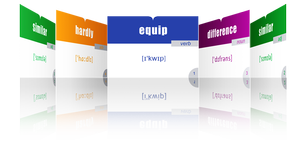ANIMAL CELL — STRUCTURE AND FUNCTION
- Подробности
- 4
Animal Cell works as a coordinated system: the cell membrane controls transport in and out, the nucleus stores DNA, RNA carries instructions, ribosomes build proteins, mitochondria generate energy, and other organelles handle processing, packaging, and recycling.
ANIMAL CELL — STRUCTURE & FUNCTION

Animal cell basics. The human body consists of billions of cells. The organism has many different types of cells, each with its own function. Here is how a typical animal cell works: it has a membrane, cytoplasm, a nucleus with DNA, protein “factories” — ribosomes, “power plants” — mitochondria, a “warehouse and post office” — the Golgi apparatus, “cleaners” — lysosomes, and the cytoskeleton that maintains shape.
Nutrient delivery. Cells are surrounded by intercellular fluid, which is supplied by blood vessels. Capillaries bring nutrients and oxygen. Many cells divide, allowing tissues to renew themselves.
Cell membrane. Every cell has a membrane that encloses organelles — the internal structures that perform different tasks. The membrane protects the cell and regulates what enters and leaves.
Nucleus & Nucleolus. The nucleus is the cell’s main control center. It stores DNA — a long molecule containing genes. Genes are instructions for the cell’s work and reproduction. Inside the nucleolus, rRNA is synthesized and ribosomal subunits (small and large “blanks”) are assembled from rRNA and ribosomal proteins.
Ribosome assembly. These subunits exit into the cytoplasm, where they mature. When they “dock” onto mRNA (which is synthesized in the nucleus), the small and large subunits combine to form a working ribosome.
Ribosomes. Ribosomes are the cell’s “protein factories.” They build proteins from amino acids according to the instructions on mRNA. Amino acids come from food, and some are synthesized with the help of gut bacteria. Blood delivers all of this to the cells.
Cytoskeleton. To maintain internal order, the cell uses internal membranes and the cytoskeleton — a support framework made of microtubules and filaments. It maintains shape, enables movement, and positions organelles correctly.
Mitochondria. Mitochondria are the cell’s “power plants”: they generate energy (ATP) through cellular respiration.
Lysosomes. Lysosomes are recycling centers: their enzymes break down waste, damaged parts, and foreign microorganisms, keeping the cell clean.
Golgi apparatus. The Golgi apparatus is the cell’s “warehouse and post office”: it packages and sorts proteins, lipids, and waste into vesicles for transport within the cell or outside it.
LISTEN TO THE TEXT



